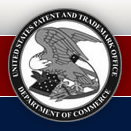(August 18, 2006) the Federal Circuit relied upon text incorporated-by-reference from a second patent as part of the intrinsic evidence for construing the term "urinary bladder submucosa (UBS) delaminated from both the abluminal muscle layers and
The "BACKGROUND AND SUMMARY OF THE INVENTION" section disclosed that "[t]he wall of the urinary bladder is composed of the following layers: the tunica mucosa (including a
and the tunica propria), a submucosa layer, up to three layers of muscle and the adventitia (a loose connective tissue layer)?listed in thickness crossection from luminal to abluminal sides." The "DETAILED DESCRIPTION OF THE INVENTION" section went on to explain:
That paragraph makes clear that “the luminal portions of the tunica mucosa layers” were defined by the patentee as the “epithelial layers” and that “the
procedure for preparing intestinal submucosa” as detailed in the ’508 patent is expressly incorporated by reference into the ’389 patent specification. . . .
The term "epithelial layers" may arguably be subject to two interpretations. On the one hand, it refers to "layers" which appears to reflect that it was meant to encompass more than just the transitional epithelium layer, i.e., the transitional epithelium layer and the tunica propria layer, the only other layer that the ’389 patent teaches is part of the tunica mucosa. See id. at col. 1, ll. 51-52. On the other hand, as recognized by the district court, the epithelium in the urinary bladder is made up of multiple layers of epithelial cells. Markman Order, slip op. at 10. Even accepting that the disclosure in the ’389 patent specification itself is less than clear as to which interpretation is correct, the second important disclosure of the ’389 specification is dispositive. As noted, the ’389 patent specification expressly incorporates by reference the procedure for preparing intestinal submucosa from the ’508 patent. . . .
The ’389 patent’s corporation by reference of the ’508 patent’s procedure for preparing intestinal submucosa, in combination with the ’508 patent’s disclosure pertaining to which tissue layers are removed by that procedure, leads to the conclusion that the patentee’s definition of the claim term as reflected in the ’389 patent as the epithelial layers and in the ’508 patent as the lamina epithelialis mucosa and its lamina propria was intended to refer to the same structures, i.e., the lamina epithelialis mucosa (or transitional epithelium layer), the basement membrane, and the lamina propria.
Relying on a medical dictionary, the district court recognized that the tunica mucosa comprises the epithelium, basement membrane, lamina propria mucosae, and lamina muscularis mucosae. The court then rejected ACell’s proposed construction that "the luminal portion of the tunica musoca" means the epithelial cells (i.e., the transitional epithelium), the basement membrane, and the lamina propria because the term "would not require the entire tunica mucosa including the basement , slip op. at 11. membrane, tunica propria and all epithelial cells to be removed as ACell contends."
That statement by the district court reflects that it believed ACell’s proposed construction of that term encompassed the entire tunica mucosa, rather than just "the luminal portion" as the claim requires. The district court’s reasoning, however, overlooks the fact that ACell’s construction permits the retention of the lamina muscularis mucosae layer of the tunica mucosa. This construction is consistent with both the medical dictionary’s list of layers that comprise the tunica mucosa, and the teachings of the ’508 patent, which specifically refer to that layer as "layer E" of the tunica mucosa. ’508 patent, col. 3, ll. 14-15. As this discussion indicates, ACell’s proposed construction does not require removal of the entire tunica mucosa as the district court’s opinion suggests, but rather removal of only a portion of the tunica mucosa.
The district court also relied upon extrinsic evidence in the form of testimony from a Dr. Harbin who convinced the court that there was no compelling reason on the part of Cook to remove the basement membrane, lamina propria, or any other non-cellular component of the bladder wall layers. Markman Order, slip op. at 11. In light of the discussion above, however, such extrinsic evidence cannot override the patentee’s definition of the term contained in the intrinsic evidence of the ’389 and ’508 patent disclosures.
Therefore, we construe "the luminal portion of the tunica mucosa" to mean "the lamina epithelialis mucosa (or transitional epithelium layer), the basement membrane, and the lamina propria."
The court went on to conclude that applying appellees’ theory of equivalence with respect to asserted claims would violate a corollary to the ‘all limitations rule[,]’ . . . that ‘the concept of equivalency cannot embrace a structure that is
from the scope of the claims.




















